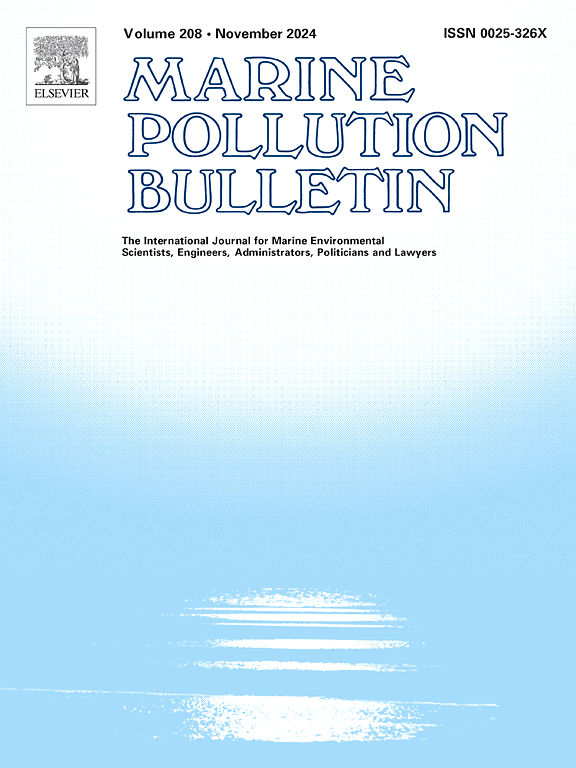Impact of cadmium on copepod Oithona similis at threshold concentrations: Determining safe exposure period
IF 5.3
3区 环境科学与生态学
Q1 ENVIRONMENTAL SCIENCES
引用次数: 0
Abstract
The level of protection by the seawater quality criteria (SWQC) of cadmium (Cd) on planktonic population remains unknown. Therefore, this study assessed the level of protection and safe exposure period of SWQC of cadmium for protection of marine life. The copepod Oithona similis exposed to the Cd at SWQC such as predicted no-effect concentration (PNEC, 0.6 μg/l), criterion continuous concentration (CCC, 1.2 μg/l), and criterion maximum concentration (CMC, 5 μg/l). The in-vivo assays with fluorescein diacetate (FDA) and 2,7-dichlorofluorescein diacetate (DC-FDA) revealed that the SWQCs are safe except for CMC for prolonged exposure. The population growth was higher at 5.4 folds in the control culture, with 4291 ± 134 ind/l, than the culture with CMC of Cd with 2403 ± 149 ind/l which is 2.7 fold growth. Protein content in copepod biomass increased between 3.27 mg/g in the control and 5.73 mg/g in CMC. Biomarker enzyme activities varied among the treatments, and higher expressions were found in CMC. Inhibition of in-vitro FDA and induced DC-FDA activities indicate the stress due to Cd toxicity. Overall, results reveal the SWQC of Cd is not safe for long-term exposure. The PNEC may ensure the protection for up to four days, CCC may be prescribed for one day, and CMC may be prescribed for one-hour exposure.
求助全文
约1分钟内获得全文
求助全文
来源期刊

Marine pollution bulletin
环境科学-海洋与淡水生物学
CiteScore
10.20
自引率
15.50%
发文量
1077
审稿时长
68 days
期刊介绍:
Marine Pollution Bulletin is concerned with the rational use of maritime and marine resources in estuaries, the seas and oceans, as well as with documenting marine pollution and introducing new forms of measurement and analysis. A wide range of topics are discussed as news, comment, reviews and research reports, not only on effluent disposal and pollution control, but also on the management, economic aspects and protection of the marine environment in general.
 求助内容:
求助内容: 应助结果提醒方式:
应助结果提醒方式:


